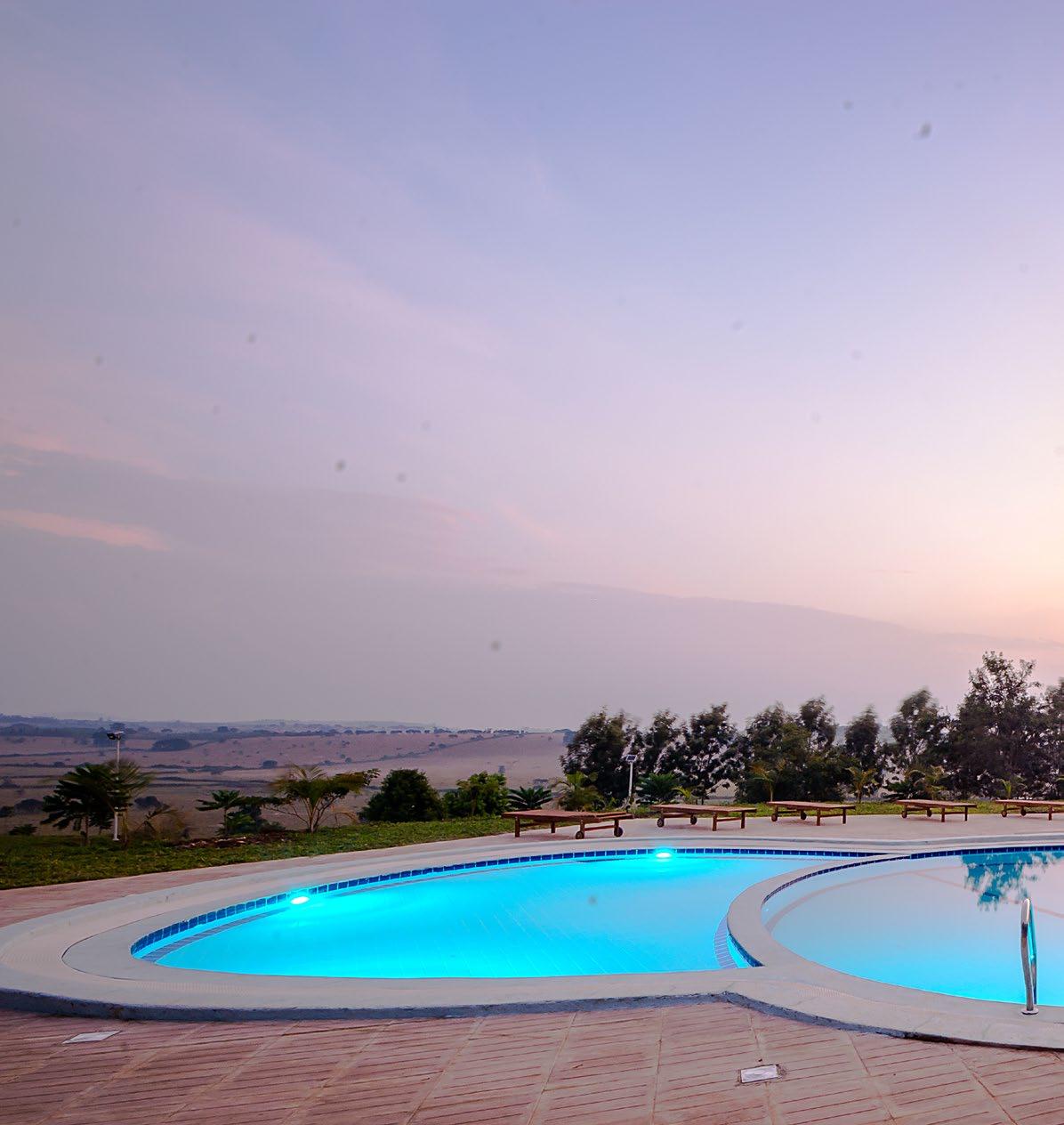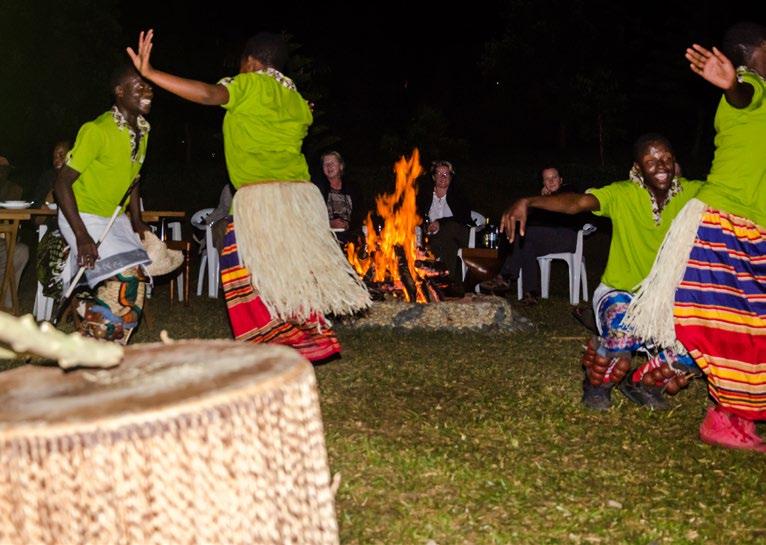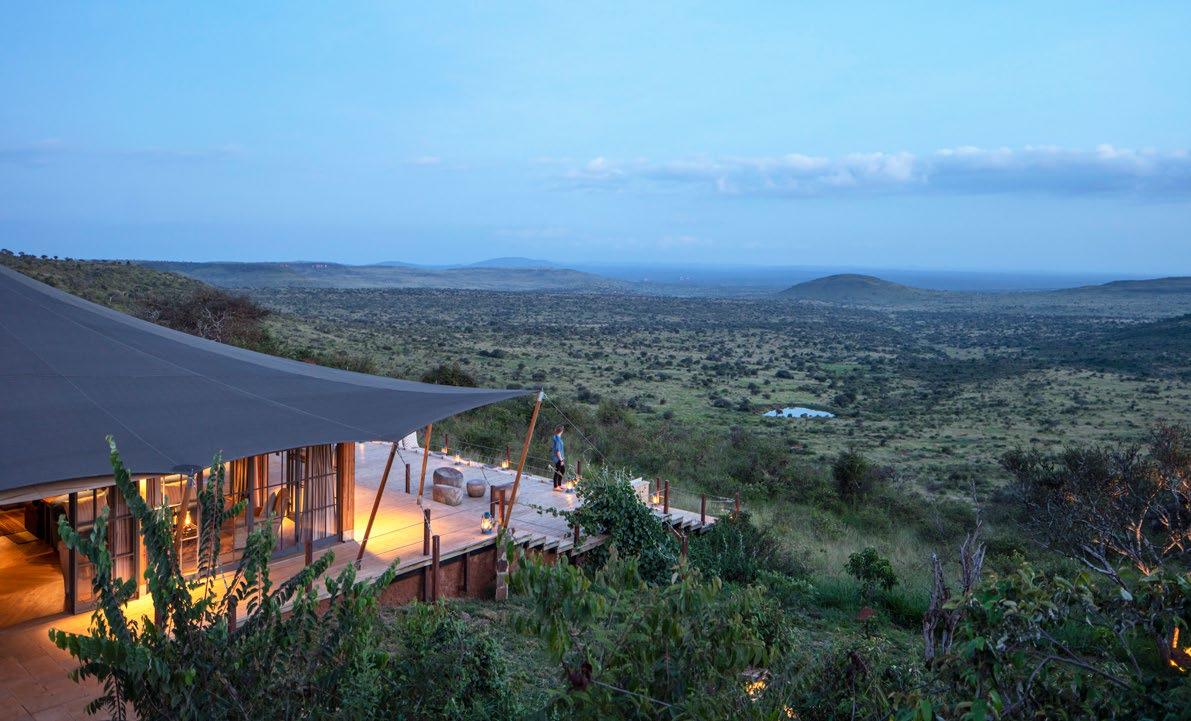
4 minute read
Under the Seven Sisters: At Loisaba Lodo Springs
by Airkenya
Cultural Immersion Awaits you at Emburara Farm Lodge
Emburara is a must for anyone visiting Bwindi National Park. It is found in Mbarara, a hilly district in Western Uganda that is found within three hours drive from the park. This vast countryside farm with luxurious eco-lodges gives a great introduction of the history of Ankole kingdom, as shown through music, dance, and traditional food. During your homestay experience at this cultural village replica, you will be immersed in the endearing customs and cultures of this tribe of tall cattle keepers.
Advertisement
Brace yourself for a heartwarming welcome during the campfire experience. The performers put up an energetic and engaging show, telling of the migration of the Ankole people and their long horned species of cattle. Their passion, enthusiasm and enjoyment of ekitaguriro traditional dance is infectious. The experience is backed by delightfully and informative story telling. You are free to join in the fun. By the same token, your participation in the making of traditional dishes is welcome, at the end of which you can join in the feast. Most of the dishes are flavored with fresh cattle products such as eshabwe, a nourishing ghee source.
Prior to your departure, the hosts will organize for you a complimentary farm/ tour in which you will learn the A-Z about their elegant long horned cattle. At the kraal, you will have an opportunity to milk the healthy looking cows using you bare hands, just like a native. John, the herdsman is a supportive and patient. You will love the complementarity of his approach and teaching styles that are full of fun moments. As you handle and communicate with the cows, you will come to the realization that they are like people. They come from different lineages and have different characters though look so much alike. Watching them and their

calves graze in the open field is such a soothing and calming encounter.
You will crown your day with a peaceful night in eco-friendly huts whose architectural design date back to the 16th century. They have a cozy interior and warm lighting. All the cottages are surrounded by lovely, flowering gardens, tweeting birds.
Throughout your stay, you will be under the care of dedicated staff! They respect your privacy and you’re always welcome to join them in their day to day and family activities as you learn about legendary traditions.



What to know
Cost: The average price for full board accommodation per night here is $150-$400.
Best time to visit; anytime of the year. Why? Like most parts of western Uganda, the weather at Emburara is friendly all year. For other details, visit www.emburarafarmlodge.com Aerolink Uganda has daily flight schedule to Emburara. For booking visit: www.aerolinkuganda.com

The male camels are working. We rode two of them this morning. With its rocky outcrops, escarpments, valleys, rivers and plains all within our view, looks like a film set, in which a lion cub could get lost. We undulate past a breeding bunch of camel cows with camel calves. A couple of men go from one udder to the other collecting their milk.
Later, in the land cruiser, we meet a young lioness sprawled in the middle of the dirt road nearby. She was spotted with a male earlier who has now disappeared. They were probably napping in a honeymoon induced stupor whilst we were passing on our camel ride, the lead guide wading in his recycled tyre sandals through the low flowing river and the other whistling and clucking to the camels alongside us.
One day the Borana got up and said to his tribe, we will migrate to live under the seven sisters constellation, known as Loisaba in the Maa of the Samburu, who also traversed these lands. Later, 57,000 acres here in northern Laikipia became a ranch for horned and great humped Zebu beef cattle. They are known as the Borana cattle because the Borana have bred these herds, native to the Oromo region in southern Ethiopia, for centuries.
In around 1000 BCE, the camel herding cushites from Somalia reached the Gabra and Rendille of northern Kenya, who then brought their camels to the lands of the Samburu. As the climate begins to make these lands yet more arid, camels are thriving in favour of cattle.
Our Borana guide Bashir, is well versed with the adaptations of the animals to these high plateaux. We are watching a group of Oryx, studying their slick heat reflective coats and their dark legs which absorb heat in the plummeting night-time temperatures. Their urine is very concentrated and their faeces is dry. They can sense rainfall and will eat root tubers when no vegetation is available. The
Elewana Loisaba Lodo Springs - Accommodation - Main areas exterior:









